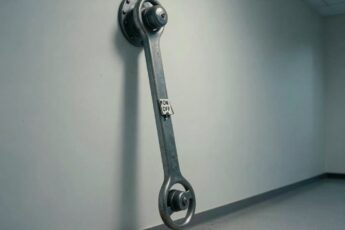When it comes to shutting down outdated or unsafe prisons, one might assume it would be a straightforward decision. Facilities riddled with asbestos, lead contamination, and crumbling structures sound downright dangerous—not only for those incarcerated but also for the staff working there. Yet, the closure of prisons, even those in dire conditions, is often met with staunch bipartisan resistance. Why? The answer lies in a complex mix of political, economic, and societal factors that don’t always lead to the outcomes you’d expect.
Recent discussions about the federal prison camp in Duluth, Minnesota highlight these contradictions. Originally slated for closure by the Biden administration due to hazardous conditions and staffing issues, the prison received a last-minute reprieve. What sparked bipartisan support for keeping the facility open? Why do communities, politicians, and corrections unions rally to save some of the very prisons they criticize as outdated and unsafe?
In this post, we’ll delve into the perplexing nuances behind prison closures, exploring why shutting down seemingly failing prisons is often more complicated than it appears.
A Battle of Safety Versus Economics
The first and most glaring reason prison closures face opposition lies in economics. Many rural towns and small communities depend on prisons as a significant source of jobs and economic activity. As some experts put it, the phenomenon of selling taxpayer spending on prisons as a form of “economic revitalization” has even been labeled “penal Keynesianism.”
This term, which references economist John Maynard Keynes’ theory advocating government spending to fuel growth, underscores how communities often regard prison jobs as essential. In Duluth, for example, the federal prison camp employs nearly 90 staff members who would face relocation—or outright job losses—if the facility closed. Affected workers, along with their families, generate ripple effects throughout local economies, making closures a deeply unpopular move for communities banking on corrections facilities as economic anchors.
Despite promises of long-term economic diversification or revitalization through other means, many communities see those opportunities as distant or uncertain prospects compared to the immediate job losses prison closures would cause.
The Case of Pennsylvania: A Microcosm of Resistance
Pennsylvania provides a distinct look into the dynamics at play. Local officials and corrections unions in Centre County rallied to prevent the closures of the Rockview State Prison and the Kewana Boot Camp. Although Centre County’s economy largely revolves around Penn State University, prison jobs still represent a source of steady blue-collar income for the surrounding rural areas.
For these towns, keeping prisons open isn’t just about employment; it’s about maintaining stability in a precarious economic environment. The resistance underscores a broader reality: for towns whose economies are intrinsically tied to penal institutions, closures have the potential to be nothing short of devastating.
Bipartisan Backlash: A Rare Agreement
When the Trump administration decided against shutting the Duluth facility, bipartisan cheers emerged. Democratic lawmakers, typically vocal about improving the conditions and treatment of incarcerated individuals, joined forces with Republicans in opposition to closure.
This united front appears ironic, considering Democrats often critique the inhumane conditions in prisons. Yet, as one notable Democratic senator from Minnesota put it, saving the prison represents a victory for workers, families, and communities dependent on these jobs. The complexities of balancing human rights and economic concerns often put policymakers in difficult positions, forcing them to prioritize immediate economic security over broader ideological goals.
Some critics point out a seeming contradiction on both sides of the aisle. Republican representatives concerned with reducing government spending are quick to rally behind economically inefficient prisons. Meanwhile, Democrats’ calls for humane treatment within prisons clash with their support for keeping deplorable facilities open.
The Incarcerated Voice: A Forgotten Stakeholder
While government officials and corrections unions dominate debates about prison closures, those directly affected by incarceration are frequently left out of the conversation. Ironically, many incarcerated individuals take a nuanced approach to the idea of prison closures.
In Minnesota, a coalition of currently and formerly incarcerated individuals weighed in on the Duluth decision. While some acknowledged the poor physical state of the facility, they also expressed concerns about how closures would impact transfers. Being moved to a new prison can disrupt rehabilitative progress, as double-bunking and new environments introduce risks of stress, violence, and difficult adjustments to unfamiliar institutional dynamics.
This highlights yet another layer of the prison closure debate: the human impact of moving incarcerated individuals to other facilities, often overcrowded ones. Physical safety within a prison, while critical, is only one component—emotional and psychological safety matter, too.
The Complications of Closing Facilities
Once a prison is closed, what happens to the physical infrastructure? For many states, shuttered facilities remain a costly headache—even years later.
In Illinois, for example, Stateville Correctional Center was deemed too toxic to continue operations, with watchdog groups and federal judges condemning its decrepit conditions. While the central facility was officially closed, the minimum-security units and reception centers stayed operational—creating an expensive bureaucratic limbo. Illinois then allocated nearly $900 million for rebuilding projects at Stateville and other facilities, sparking concerns about soaring costs.
Similarly, California has struggled to deal with the aftermath of closures. Though the state has shuttered multiple prisons as part of an overall reduction strategy, facilities are kept in a “warm shutdown” state to prevent deterioration, costing taxpayers millions each year. Additionally, regulatory hurdles limit the ability to repurpose or demolish these structures, leaving communities burdened with empty symbols of what once was.
The environmental and logistical challenges of repurposing prisons further complicate matters. In many cases, the heavy use of concrete, outdated septic systems, and structural designs built for incarceration make prisons particularly difficult to transition into other uses. While efforts to turn old prisons into community colleges or state office complexes show promise, they remain few and far between.
Taxpayer Dollars and Political Irony
Many advocates for prison closures argue that maintaining substandard facilities ends up being more expensive than simply closing them. Meanwhile, critics note that keeping prisons open often reflects little more than political pandering to local economies rather than sound fiscal policy.
Ironically, states that lean most heavily on federal funding tend to be the loudest champions for local corrections investment. For example, states like Georgia, which receive approximately $3 in federal spending for every $1 paid in federal taxes, essentially treat prisons as yet another welfare program. However, the costs of keeping derelict prisons operational often remain a quiet and misunderstood drain on taxpayer resources.
Conclusion: Closing Prisons Isn’t Just a Political Decision
The debate over prison closures reveals the deep entanglements between economic reliance, political maneuvering, and social justice issues. While the physical conditions of prisons like the one in Duluth make their closures seem like common sense, the broader implications for staff, communities, and even incarcerated individuals complicate matters.
If meaningful change is to take place, advocates for prison reform must address all components of the issue: providing economic alternatives for prison-dependent towns, prioritizing humane treatment of those incarcerated, and ensuring transparent financial processes for closing and repurposing facilities. Pragmatic, bipartisan cooperation will be the only way forward—though that may prove as complicated as the closures themselves.
Actionable Takeaways
1. Encourage Economic Diversification: Policymakers should create transition programs for towns reliant on prisons by providing incentives for new industries and retraining opportunities for displaced workers.
-
Foster Rehabilitation-Focused Systems: Any plans for prison closures should prioritize protecting the rehabilitation journeys of incarcerated individuals to prevent setbacks caused by disruptive transfers.
-
Streamline Post-Closure Processes: States should examine ways to repurpose closed facilities creatively and cost-effectively—including promoting partnerships with private developers or community-focused organizations.
By tackling the political, economic, and human challenges head-on, we can begin to navigate the complex issue of closing outdated prisons while fostering a more just and sustainable corrections system.





Leave a Comment